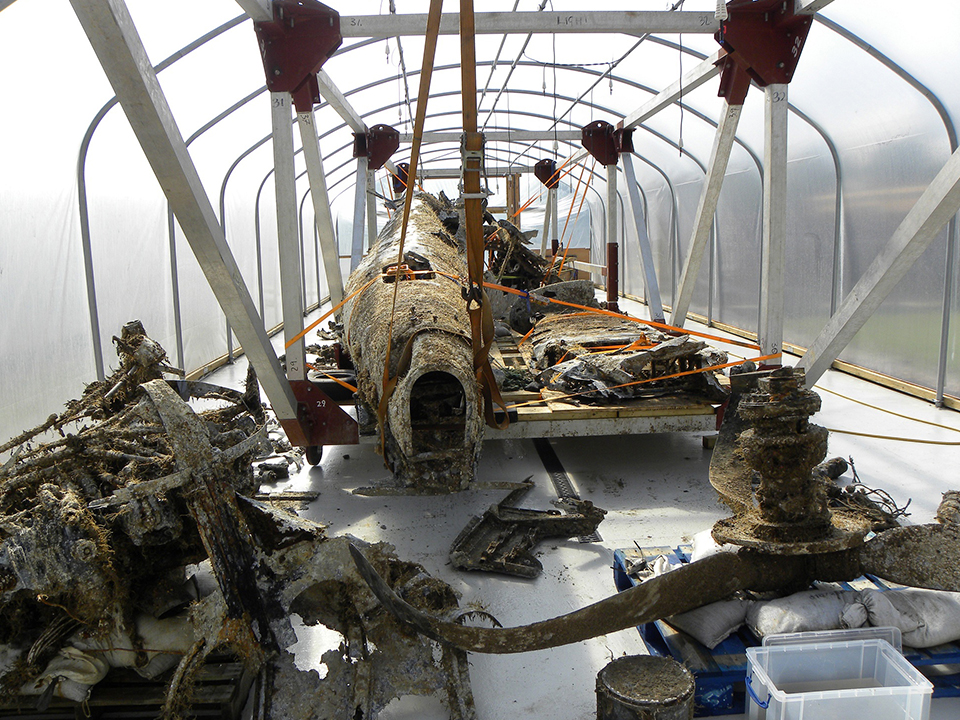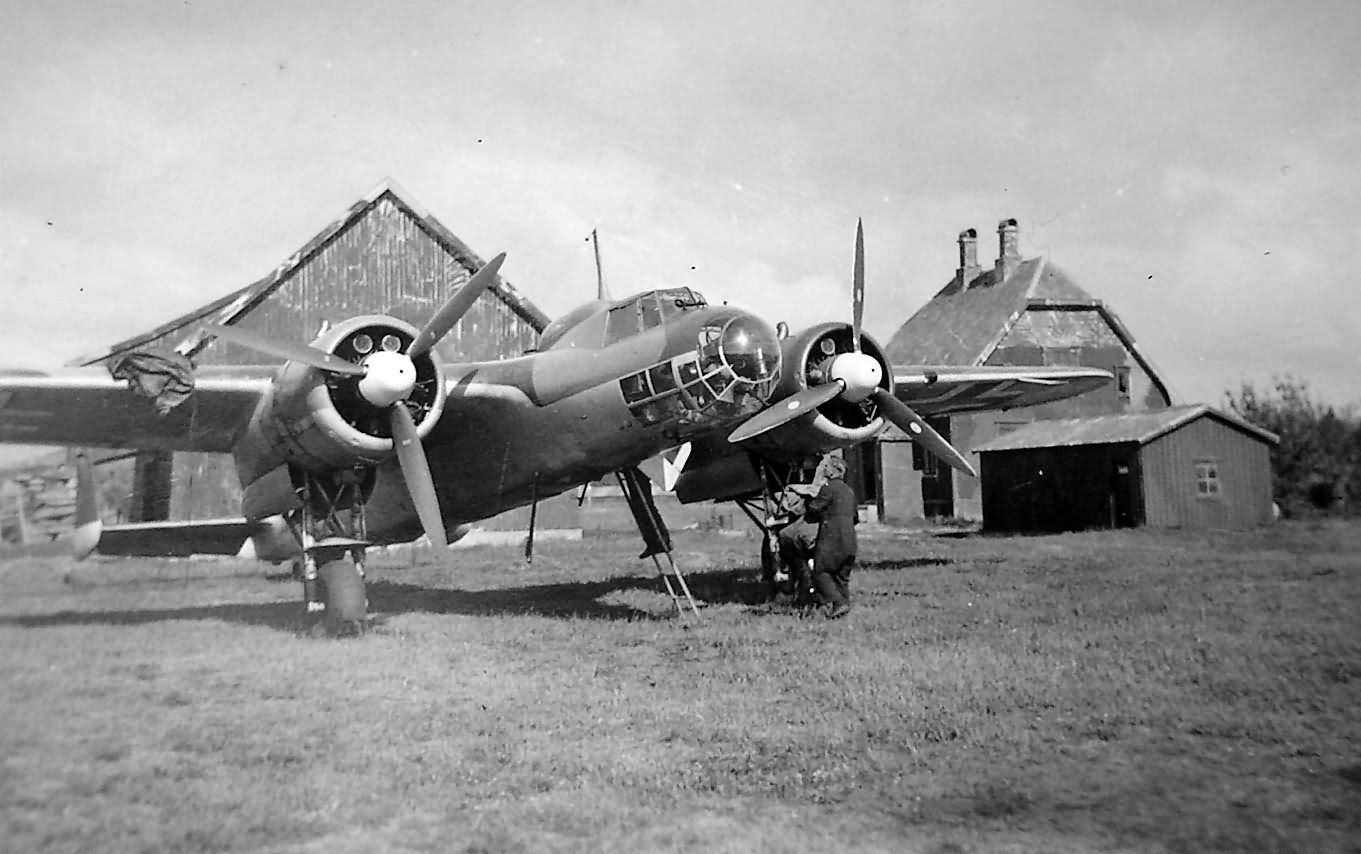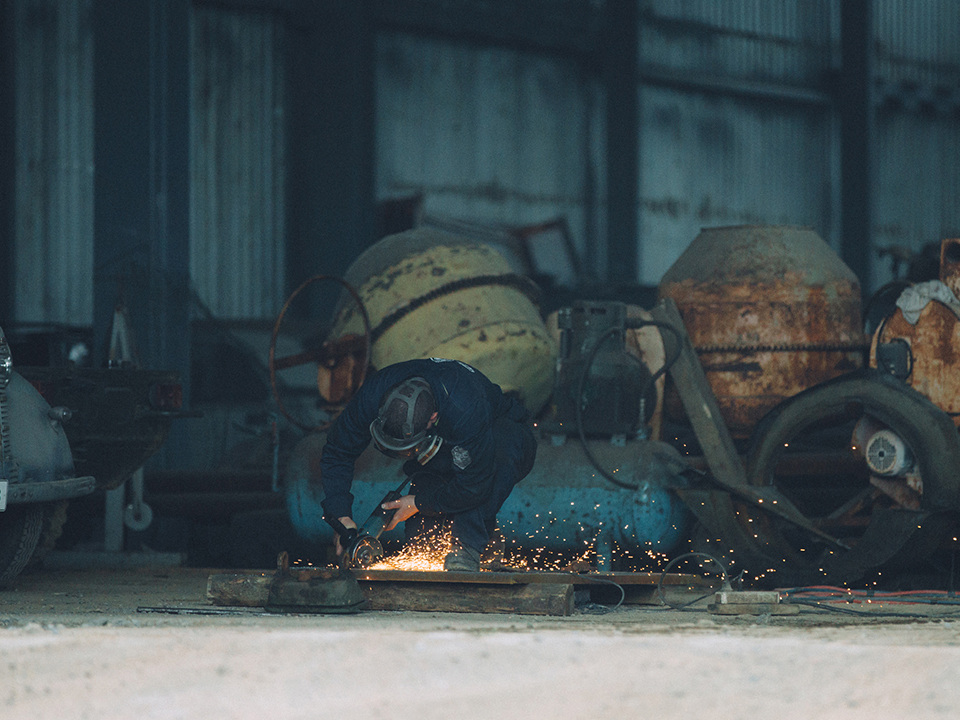For millennia, human hands shaped history.
But at the dawn of the 20th century, we couldn’t ignore the increasing prevalence of huge iron vehicles—tanks, ships and planes—that supported warfare.
Wargaming’s dedicated plenty of AR, VR and other technology-based projects to these iron comrades-in-arms. But whatever great engineering marvels they may be, a tank is first and foremost a physical object that demands a tactile experience.
This is why, right from the beginning of its CSR initiatives, Wargaming has contributed to the restoration and conservation of legendary military vehicles.
Dornier Do 17
This was our first project executed in partnership with the Royal Air Force Museum in 2013. The Dornier Do 17 is the least known of the trio of German twin-engined bombers used during the Battle of Britain. Its twin fin configuration, together with the narrow fuselage and shoulder mounted engines, gave the aircraft a distinctive silhouette, earning the nickname ‘The Flying Pencil’.

More than 1,500 Dornier 17s were built. Over 400 were employed by the Luftwaffe during the Battle of Britain. Only one survived. And for many years this unique aircraft lay on the seabed of the English Channel. That was until, in June 2013, it was lifted from the waters of the Goodwin Sands, three miles off the coast of England and brought back to RAF Cosford for conservation. Shortly afterwards, the museum arranged a special exhibition starring the restored Dornier 17, which was financially backed by Wargaming.

To make the dramatic story of the world’s last Dornier 17 recovery available to a wider audience, Wargaming developed an AR mobile application which allowed users to see the legendary bomber plane at locations around the world, and produced a mini-documentary about the project.
Soon after, inspired by the success of Dornier 17 project, the company undertook a series of monument and vehicle restorations and renovations across the globe in cooperation with local museums. This was a high-stakes and captivating challenge as the projects took place shortly before or right on the eve of the 70th anniversary of the end of World War II.
The Rebirth of Two Legendary Victory Tanks
The T-34 is widely regarded as a “victory tank” due to its stunning characteristics and excellent performance during WWII. Wargaming just couldn’t stand by when an opportunity to restore the iron legend presented itself—two opportunities in fact.
T-34-76
In 2012, the very year the Dornier Do-17 conservation project took place, Wargaming and Stalin Line cooperated to restore a T-34-76 (1943 modification) tank. With no special equipment at their disposal, the team managed to fully restore the vehicle to working condition using only parts manufactured during World War II.
Soon afterwards, Wargaming shot an inspiring documentary revealing not only the technical background of the project but also the enthusiastic attitude, passion for history and the truly collaborative spirit which had driven the team behind the project:
T-34-85
In 2015, we took part in another restoration project dedicated to the 70th anniversary of the end of World War II. This time, far off in Kyrgyzstan. To pay homage to all the heroes who had endured the horrors of war in search of victory, the country’s General Staff of the Armed Forces endeavored to restore a T-34-85. Wargaming agreed to provide support for the admirable initiative.
The vehicle, seemingly the only T-34 in the territory of Kyrgyzstan, was found in one of the local military bases. The T-34-85 was restored to full working order by a team of conservation professionals from the General Staff and headed the jubilee victory parade in Bishkek, the country’s capital, back in 2015. And we, too, shot a documentary revealing the project’s background:
New Life for the Legendary KV-1
The KV-1 is one of the most iconic tanks in Soviet World War II history. So it was natural that the news of a tank found in a bog in the Vitebsk region, Belarus, drew the attention of the Wargaming team immediately.
In November 2015, fragments of a KV-1 were discovered and salvaged from the bog. It took several months for Wargaming and The Historical and Cultural Complex Stalin Line to restore the tank to full working order.

This coincided with the the 75th anniversary of Soviet tanker ace Zinoviy Kolobanov’s astounding feat: in 1941, the young commander of a KV-1 and his unit destroyed 22 enemy tanks in 30 minutes.

The restored vehicle replenished the museum’s vehicle collection. To document this journey, Wargaming produced a special video:
15 Tanks Renovated by Volunteers
Earlier, in 2014, Wargaming undertook a series of restorations in collaboration with The Central Armed Forces Museum (CAFM). The project captured the hearts of fans of Wargaming’s flagship title World of Tanks, and shortly after we issued a call for assistance, over 300 volunteers joined the initiative.
All in all, 15 tanks from the CAFM’s collection were restored and renovated thanks to the joint efforts of Wargaming’s expert consultants, museum staff and hundreds of volunteers.
The museum’s tank collection was replenished with the renovated vehicles, including the legendary Т-34, Т-28, SU-85, SU-76, KV-1 and KV-2, and was opened to the public soon after the project wrapped.

Wargaming also helped restore and renovate tanks and monuments in Krasnodar (around 30), and Medyn (two monuments were completely restored).
SU-100. Back on the Run
In November of the same year, we embarked on another ambitious challenge. This time we took on the role of a media sponsor for the Stalin Line Historical and Cultural Complex to give new life to the famed tank destroyer SU-100.
What set this project apart is that the vehicle was restored to full working condition, using only original parts.

It took conservation professionals about half a year (from November 2014 to April 2015) to bring the SU-100 back to life. It was completed on the day of the 70th anniversary of the end of World War II, and was revealed to the public along with other items from the Stalin Line’s open-air collection.
Shortly after, Wargaming released a dedicated documentary to show how a team of restoration experts managed to turn an old rusty vehicle into a masterpiece of military machinery:
AC-1 Sentinel. The Long and Winding Road Home
Despite many initiatives taking place in the CIS, Wargaming never limited its activity to the region. In 2016, Wargaming returned the unique Australian AC1 Sentinel tank to its homeland. With Wargaming’s help, the rare vehicle (only three AC1 Sentinels remain in the world) journeyed from Texas, USA, to Cairns, Australia, where it underwent renovation before being unveiled to the public.

During its refurbishment, the commander's cupola, hatch door, and armored visor door had to be fabricated and fixed. Its gun barrel has been cosmetically restored, and the tank underwent sandblasting and painting to restore some of its former glory. The process was elaborately depicted in a video starring Wargaming’s Military Specialist Nicholas Moran:
Now the tank is available for the public in the Armour and Artillery Museum in Cairns (Australia). In order to get the global World of Tanks community acquainted with the Sentinel tank it was introduced to World of Tanks on PC and World of Tanks Blitz back in 2016.
To learn how we employ AR, VR and other technologies to prolong the lives of iconic armored vehicles, check our upcoming article.